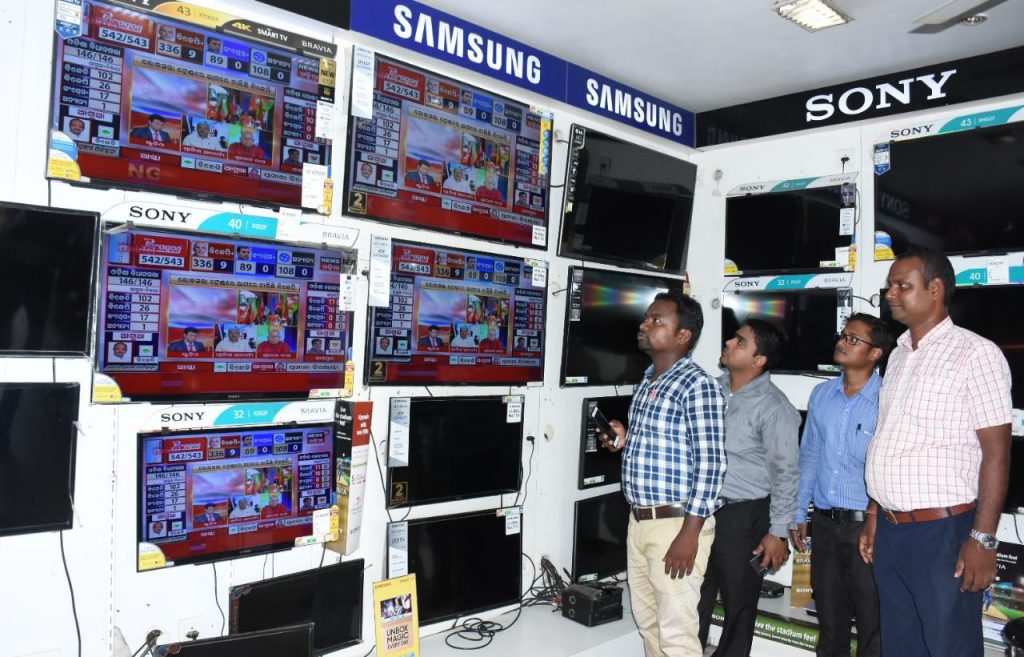New Delhi: The appliances and consumer electronics industry, which lost around 25 per cent of annual sales in the COVID-19-hit 2020, expects to regain the lost ground next year through a special focus on digital initiatives, emerging trends, change in consumer behaviour as well as the impetus to ramp up domestic manufacturing activities.
From WFH to DIY, 2020 has been unique with many challenges and possibilities for the industry. Leading brands witnessed rapid increase in digital consumption, changes in demands where more consumers are seeking value propositions with a comfortable, convenient, and connected experience to support a changed lifestyle amid the coronavirus pandemic.
Helped by high double-digit growth in festive season sales — where consumers purchased larger screen TVs, bigger refrigerators and washing machines to manage changing lifestyles under WFH (Work From Home) and DIY (Do It Yourself) trends — the industry expects the second half of the current fiscal ending March 31, 2021 to be better.
Companies will continue to introduce products based on new technologies to establish themselves even more firmly in the segment by tapping the emerging demand for automation and digitisation, expanding presence in the digital medium with a special focus on omni-channels as well as semi-urban and rural markets.
According to Sony India, 2020 was an “unprecedented year”. However, in the past few months, it has witnessed a “sharp tendency shift” towards established brands and customers are now prioritising overall value proposition rather than just price.
“Overall, we see ourselves as a stronger brand in 2021 with Sony launching technologically advanced products and nicely meeting the demand from our customers,” Sony India Managing Director Sunil Nayyar said.
Samsung India, whose electronics business saw strong double-digit growth in the second half over last year, witnessed some very interesting trends among consumers who wanted to buy larger screen TVs, bigger refrigerators and washing machines to help them manage their changing lifestyles.
“This trend was visible even in smaller towns, leading to our premium products running out of stock across categories. This year, we have strengthened our lifestyle and luxury product portfolio. We are now excited to enter 2021 with our new vision of Powering Digital India and expect consumer demand to stay strong in the New Year,” Samsung India Senior VP of Consumer Electronics Business Raju Pullan said.
The pandemic changed the scope and range of home appliances that evolved from conventional to smart, aiding in multi-tasking, Panasonic India and South Asia President and CEO Manish Sharma said.
“Consumers today are seeking a value proposition, having a comfortable, convenient, and connected experience to support their lifestyle,” he said, adding the company plans to enhance the connected ecosystem of its products through Miraie, the connected living platform powered by IoT (Internet of Things) and AI (Artificial Intelligence).
However, there is a warning for the sector as well. According to the Consumer Electronics and Appliances Manufacturers Association (CEAMA), rising commodity costs could hit the industry in 2021.
“Rising commodity costs of late is now expected to impact the industry in the immediate months ahead,” CEAMA President Kamal Nandi said.
Though with predictable production and demand patterns, the industry is now able to cope up with the increase in demand but logistics still remains a challenge for some imported products due to freight issues and delays in port clearances, Nandi said. He is also the Executive Vice President of Godrej Appliances.
Besides, the industry also faced several challenges on sourcing of components, particularly from China on which it is largely dependent, due to COVID-19 earlier this year and later on account of deteriorating relationship between the two countries.
The industry took on the challenge, helped by the government’s Production-Linked Incentive (PLI) scheme to reduce India’s dependence on China, and is creating a base for domestic component manufacturing.
Terming the move of PLI as a “game-changer”, the country’s largest contact manufacturer Dixon said it will help to create a world-class manufacturing base for the consumer electronics and appliances segment.
“PLI announcement for the sector is a game-changer for the Indian industry. Now, we can be a global champion in manufacturing. It has laid a strong foundation for the years to come and will help to make India as the global hub for manufacturing for the sector,” Dixon Technologies Chairman Sunil Vachani said.
Moreover, to promote domestic manufacturing in the segment, the government re-imposed customs duty on import of open-cell for TVs from October this year. It had also put restrictions on imports of finished air conditioners.
LG Electronics India is expecting a 50 per growth in the premium segments of home appliances such as refrigerators and washing machines. It also had a “huge spike” in demand for other products like microwave and dishwashers, and is investing to create multiple contents engaging the customers, LG Electronics India VP of Home Appliances Vijay Babu said.
In 2020, new product categories such as dishwashers picked up substantially. “This was also a year of new product categories like dishwashers and air purifiers witnessing a good pick up and we expect them to continue to gain popularity, as the market penetration is currently low and limited mostly to metros,” Voltas MD & CEO Pradeep Bakshi said.
BSH Home Appliances MD & CEO Neeraj Bahl said, “our dishwashers, mixer grinders and washing machines picked up substantially and we are happy to share that we will cross our original top line and better our bottom line”.
It expects 2021 to be “very promising” and anticipate a growth of 25 per cent.
As per a joint report by CEAMA and Frost & Sullivan, the appliances and consumer electronics industry’s total market size was Rs 76,400 crore in 2018-19.
PTI
